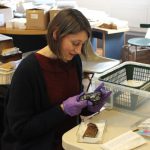Over the last two years National Museums Scotland worked with partner museums across Scotland to learn more about their Chinese, Japanese and Korean collections. From samurai armour to celadon, jade to jeboks, over 25,000 objects from China, Japan and Korea have been collected by 36 museums across Scotland.
We wanted to learn more about collections from East Asia that exist across Scotland, including how they became part of these museums’ collections, and to establish links between objects: for example, identifying collections from the same donor or provenance in different institutions. We also wanted to highlight the historic importance of these collections and share them with people across Scotland. One of our many partners was Perth Museum & Art Gallery. You can learn about their ‘Dress to Impress’ community robe, inspired by their collections rediscovered during the review, in this film.
What we found, above all, is how many Scottish people travelled to East Asia and their fascination with East Asian culture. The collections reveal the role that Scotland’s maritime trade, military expeditions and Christian missions have played in shaping and reflecting perceptions of East Asia in Scotland. For example, some objects were purchased via dealers or directly in the region as artworks or travel souvenirs, some were gifted by governments or individuals, and others were looted during military campaigns. All these collections have the potential to reveal how Scottish collectors encountered and understood East Asian cultures and how they were consequently represented in Scottish homes and museums.
Investigate
The collections are dispersed throughout Scotland. Investigate what’s in your area:
- North East
- Highlands & Islands
- Tayside, Central & Fife
- Edinburgh & Lothians
- Glasgow & Strathclyde
- Scotland South
China
Chinese material culture, in particular, is well represented in East Asian collections in Scotland, reflecting Scotland’s military, mercantile and missionary presence in China throughout the late 19th and first half of the 20th centuries. For example, some museums have items related to British military action in China during the Second Opium War (1856-1860), including some objects that were probably looted by soldiers during this conflict.
The review also encountered many significant collections of Chinese ceramics, including the Burrell Collection (Glasgow Museums), James McNeill Whistler’s Chinese porcelain at The Hunterian (University of Glasgow), and James Cromar Watt’s Chinese lacquer and cloisonné wares at Aberdeen Art Gallery and Museums.

Our Chinese Curator, Dr Qin Cao was especially interested in the types and provenance of Chinese coins we found in other museums. Here is a link to an Identification guide to Qing dynasty coins which Dr Cao has developed:
Japan
Key Japanese art collections in Scotland were donated by George Rodgers Macdougall to The McLean Museum and Art Gallery in Greenock (Inverclyde Council), and by James Main Dixon to Paisley Museum (Renfrewshire Leisure). Another particularly important collection is the Henry Dyer Collection of Japanese woodblock prints, scroll paintings, painting albums and musical instruments, which is divided between Special Collections at The Mitchell Library (Glasgow Museums and Collections, Glasgow Life), Glasgow Museums, and Edinburgh Central Library (City of Edinburgh Council).
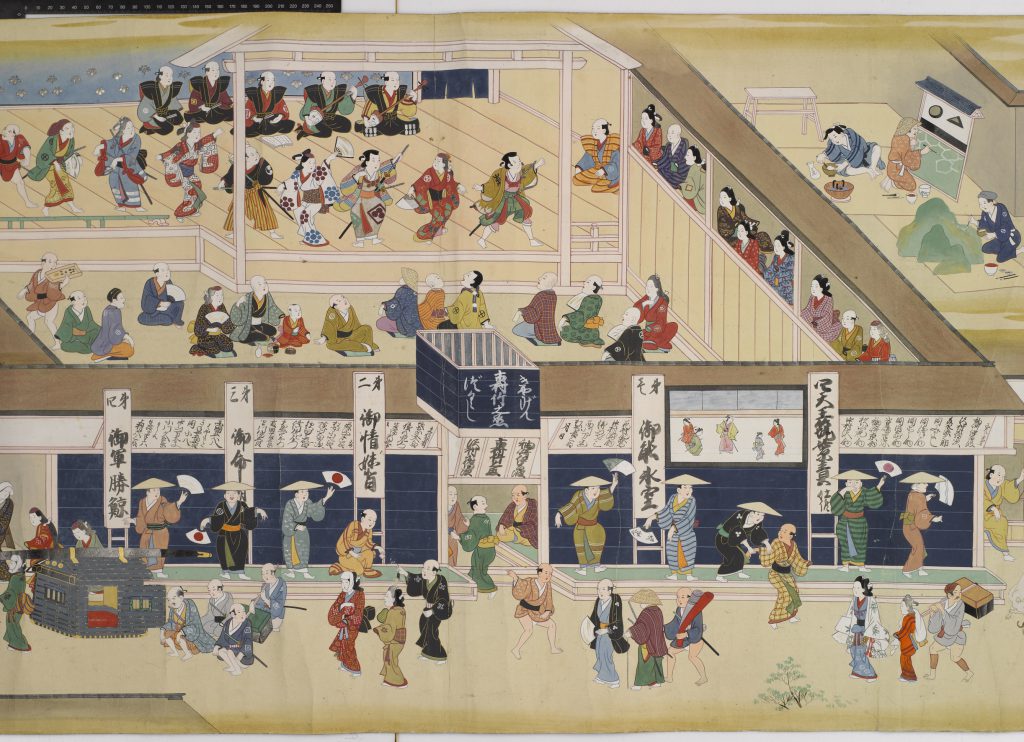
This scroll from the Henry Dyer collection is on display at the National Museum of Scotland. Find out more in our Explore collections section.
Korea
In contrast to the Chinese and Japanese collections in Scotland, the number of Korean artefacts is comparatively small. Perth Museum and Art Gallery (Culture Perth and Kinross) has interesting Korean textiles in its collection. Korean hats were discovered in the collections of The McManus: Dundee’s Art Gallery and Museum (Leisure and Culture Dundee), and long-stemmed tobacco pipes at Live Life Aberdeenshire Museums and at Newhailes House and Gardens (National Trust for Scotland). It will be interesting to see if more Korean objects come to light after the publication of the East Asia Collections Review.
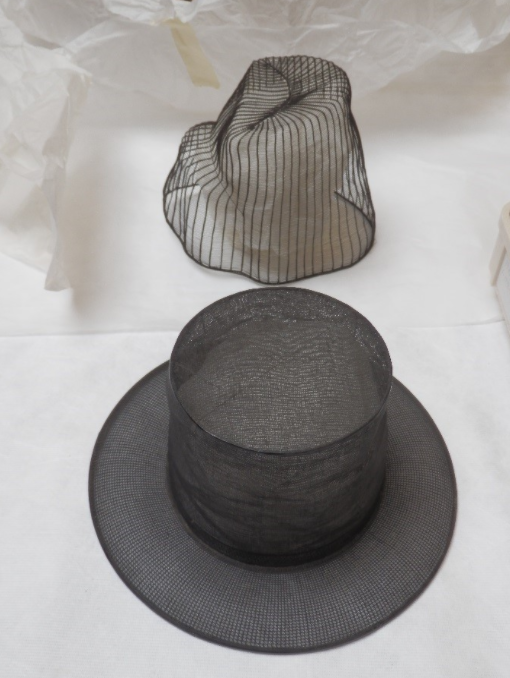
Highlights
There are some surprising finds. The collection at Stromness Museum in Orkney holds objects from China and Japan, among them four pairs of Chinese shoes thought to date from the 19th century, including two pairs of silk embroidered shoes with raised platforms, of the type worn by Manchu women, and a pair of child’s embroidered tiger-head shoes.
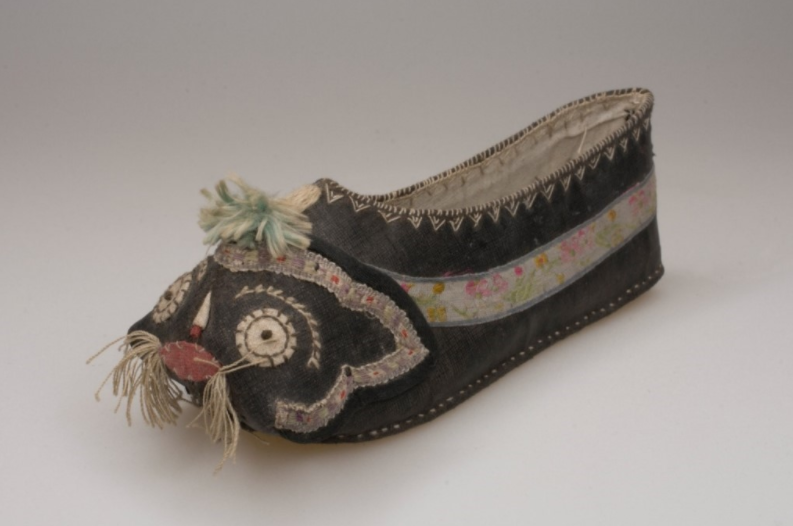
One of the most exciting finds was the cape of a lama priest’s robe that entered the collection at Elgin Museum in 1866. This has been identified as part of the regalia worn by practitioners of Tibetan Buddhism, especially when performing rituals relating to Tantric deities.
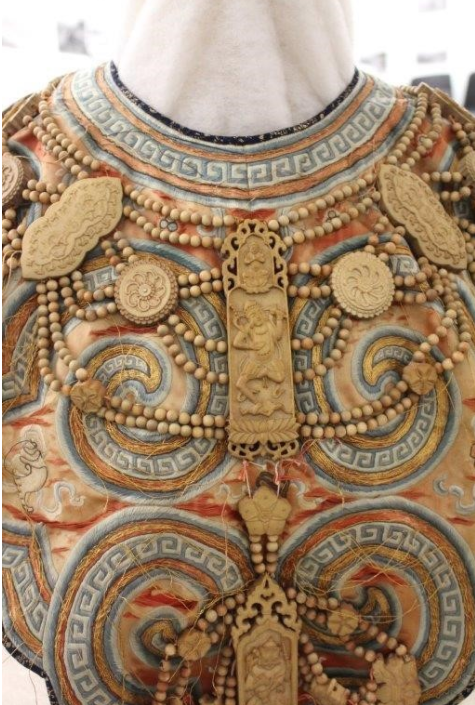
Over the course of the project many exciting rediscoveries were made. These included Perth Museum and Art Gallery’s Ainu textiles from northern Japan, donated by John Henry Dixon, and the Chinese ceremonial armour, donated by Melville Jamieson Gray. The University of Aberdeen has Dr Isaac Newton’s ceramic collection, and an outstanding group of Chinese archaic bronzes that were collected by the honorary curator, Professor Robert Lockhart. Fife Cultural Trust also have an important collection of Chinese export silverware, donated by John Galloway and Mrs Forbes. Many more fascinating objects are described throughout the report and some other key highlights can be found here.
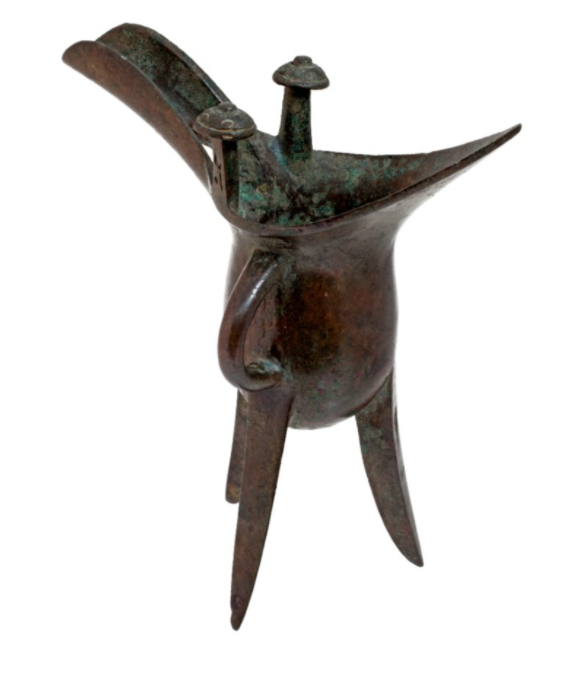
Supporting Scotland’s museum sector
The East Asia Collections Review aims to support the work of museum professionals tasked with the responsibility of interpreting the Chinese, Japanese and Korean objects in their care. It is hoped that by making the findings of the review accessible to specialist and non-specialist audiences, interest in Scotland’s East Asian collections will grow. We hope the stories provided here (and in more detail in the full report) encourages further research and connections identified in the East Asian holdings across Scotland.
We also hope people across Scotland will continue to use the learning resources for families and schools which can be found on our website.
The Ancient Egypt and East Asia National Programme has been made possible thanks to the generous support of the National Lottery Heritage Fund. Revealing Stories has been made possible thanks to the Esmée Fairbairn Collections Fund, delivered by the Museums Association.

